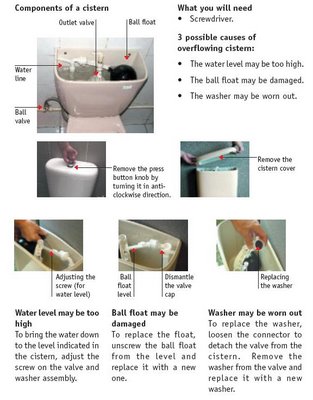
Spalling concrete refers to minor cracks and bulges on the concrete cover ofceilings. This is caused by the corrosion of steel bars embedded in the concrete slab over a period of time.
What is wrong
The minor cracks and bulges on the ceilings may eventually cause the concrete cover to dislodge, exposing the steel bars embedded in the floor slab.
Possible causeNatural deterioration process called carbonation.
Getting it fixed
Engage a contractor to carry out appropriate repair works which generally involve the following steps:
• remove the concrete at the “spalled” areas to expose the steel bars.
• clean the exposed steel bars and apply rust inhibitor.
• apply bonding agent to affected surface.
• patch up the hacked area using polymer modified cement mortar or epoxy mortar.
• paint affected area to match the surroundings.
Preventive measures
• Paint ceiling regularly every 3 to 5 years to slow down the carbonation
process.
• Check ceiling regularly and seal holes/cracks so as to prevent ingress of moisture and oxygen, the presence of which would cause the embedded steel bars in the concrete to corrode.
• Keep level of humidity down in wet areas like the toilets/bathrooms by opening doors/vents.
Extracted from HDB Handbook.




